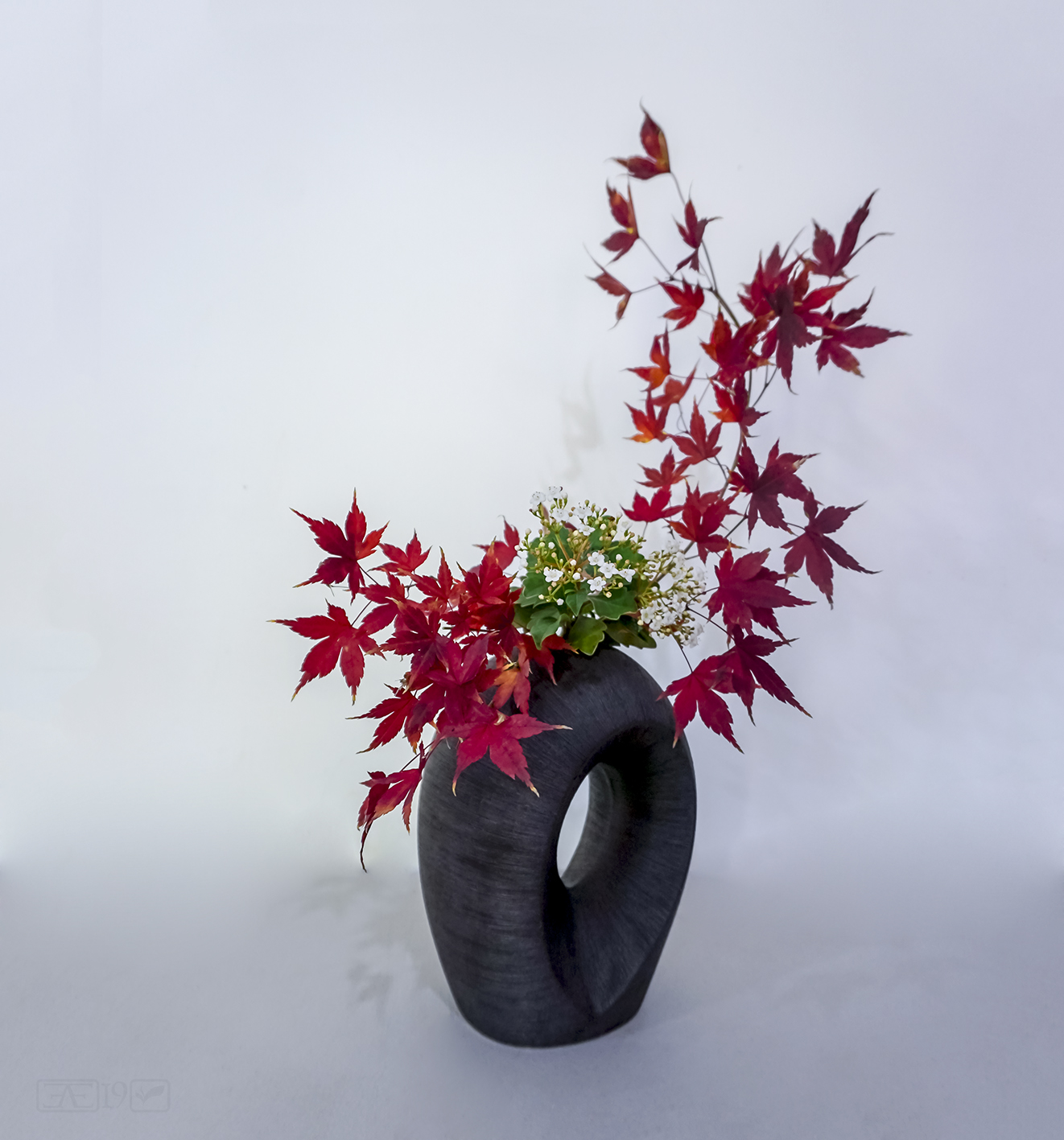Common Names: Various
Botanical Names: Various
In Season/Availability: Year round
Description: This is more a process that can be applied to a range of different plant materials rather than a way of preserving one specific kind of flower. It is predominantly used with leafy matter on woody branches, such as japanese maple or sweetgum/liquid-amber. It is also suitable for aspidistra leaves and some flowers which are composed of specialised leaves rather than petals (called “bracts“), leucadendron fits this category as does hydrangea (surprisingly).
Technique to prolong the material: First you will need glycerin and hot water. Combine 1 part glycerin with 2 parts hot water. You can make as little or as much of this mixture as you think you might need. Glycerin can be purchased from many pharmacies and/or chemists and some grocery stores (check your local suppliers). The reason the water needs to be hot at this stage is so that the glycerin will mix and dilute in the water. Once the two are well mixed set it aside and let it cool a little to room temperature. Prepare the materials you wish to preserve by removing enough side shoots that the stem will sit properly into the mixture and use mainly small to medium size materials with not too many leaves. Remember that only the parts that are able to take up the liquid effectively will be well preserved, so leaves at the ends of long branches might not benefit from this treatment, however, that being said feel free to try it as an experiment and see how you go.
Once you have trimmed the material getting rid of anything that you don’t want to preserved be sure to cut the end in water, hold the end there for a few seconds and then transfer it into the container with the glycerin solution (which should now be at room temperature). The material should be maintained in the solution in a cool out of the way place away from direct sun for several days to a number of weeks - until you can feel a waxy/oily residue on the tips of the leaves. This indicates that the glycerin solution has fully permeated the plant matter and the process is complete. Remove the plant material from the solution cleaning up any drips and wipe the surface of the leaves very gently with a damp cloth to remove any excess residue. This material should now last significantly longer than if they were placed only in water and should remain flexible and fresh feeling for days, weeks, months and even possibly years to come.
Long Term Preservation: To make the most of this kind of preserved material and use it in the longer term be sure not to let it become mouldy or to sit in water for too long. If it is in water you will need to make sure the water is extremely clean and is changed very regularly (daily). At the end of each use the material should be given a gentle wipe with a lightly dampened soft cloth to remove any dust or mould spores and then returned to storage in a cool, dry, dark place out of the sunlight (this should also help to preserve the colour of the material).
Acknowledgement: This article post has been prepared using information provided in part by Ekaterina Seehaus in her “Ikebanaweb” live video blogs from 7 and 21 November 2018. (Many thanks Ekaterina)
